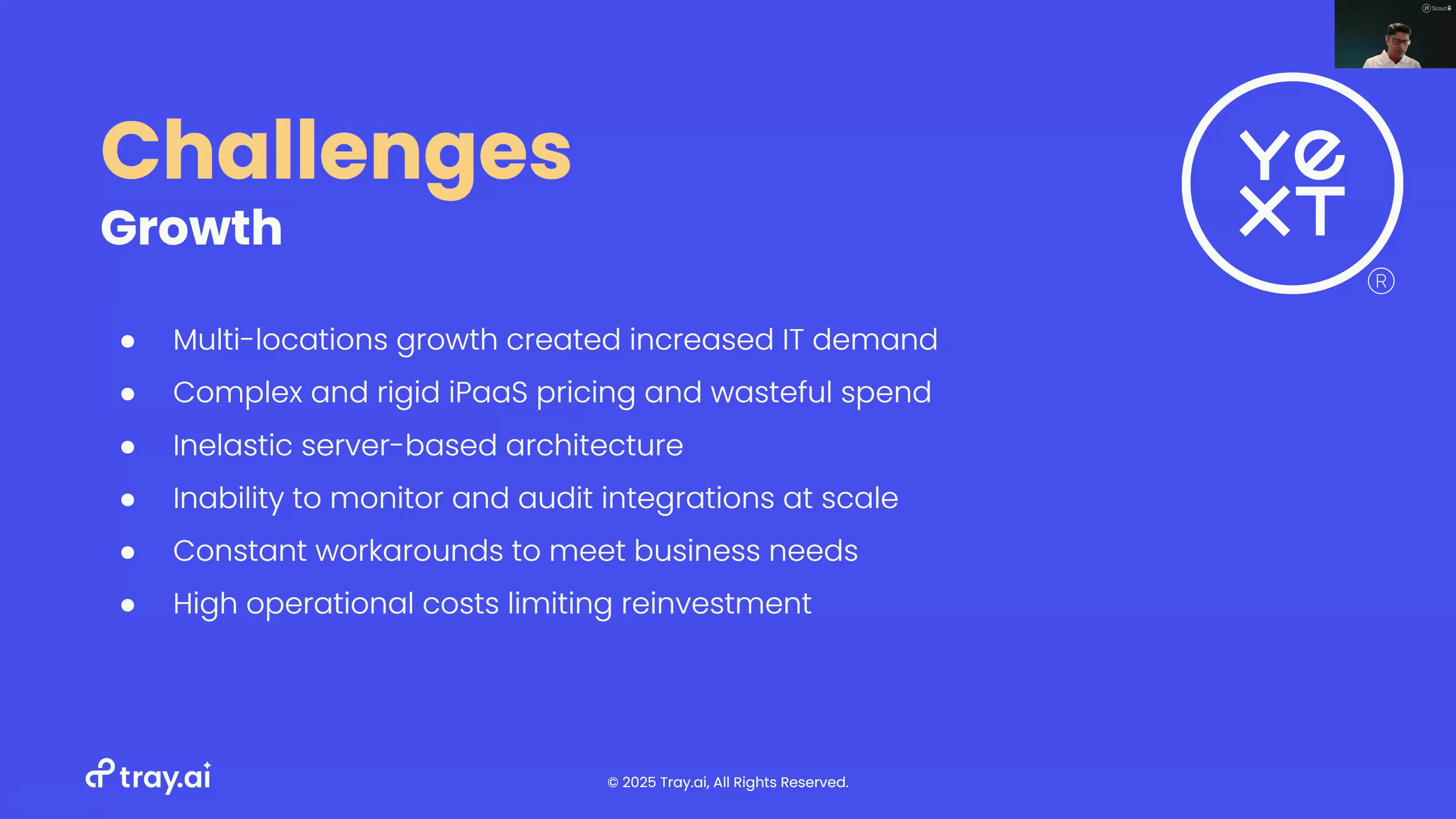How Yext cut integration costs by 60% in 90 days
Yext delivered 100+ integrations in 3 months. See how they did it—and why their old platform was slowing everything down.
Yext’s integration platform created delays and growing costs. It took too long to build and change workflows, and the cost of maintaining multiple tools kept growing. The team needed a faster way to support new systems, scale delivery, and reduce overhead.
In this on-demand session, Tulasi Donthireddy, Senior Director of IT & Business Systems at Yext shares how his team moved over 100 integrations in under 90 days, cut costs by 60%, and made it easier for both developers and business teams to deliver on time.
You’ll also hear from Alexander Wurm, Senior Analyst at Nucleus Research on what most teams miss when evaluating integration cost and what to look for if you're planning to modernize.
What you’ll learn
- What pushed Yext to replace their integration platform
- How they handled the migration with a small team and a tight timeline
- How removing extra tools made delivery and support faster
- How they enabled faster delivery across technical and business teams
- Where integration costs hide and how to spot them, according to Nucleus
- What matters most if you're planning for agent-based automation
Session chapters
- Why integration cost is rising
- What to look for in a modern iPaaS
- What pushed Yext to make a change
- Cost savings and impact across teams
- Best practices for scaling integration success
Resources shared in the session
AI Agent Strategy Playbook
Learn how teams are approaching agent design and where many get stuck. This guide walks through examples, tradeoffs, and integration patterns that help teams get to production faster.
→ Download the playbook
2025 Nucleus iPaaS Technology Value Matrix
Compare top vendors on usability, functionality, and cost efficiency. Includes analyst guidance on what to prioritize in your next platform decision.
→ View the matrix
Featuring







